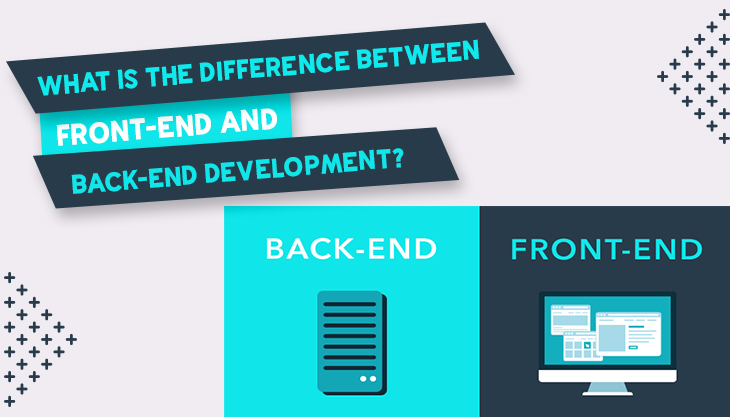If you're new to coding and software engineering, concepts like the front end, back end, and full-stack development may be confusing. Scripting languages like Ruby on Rails and Javascript may make your head spin. At Techasoft Foundation, we think that anyone who is willing to study and put in the effort to master the skill of coding may have a successful career in technology. So, to clear up some of this scientific jargon and elucidate the differences between development styles, let's take a look at them here.
The foundation that enables front-end designers to focus on what the user sees is provided by back-end developers. Both are essential components for a well-functioning software or website. When trying to manage the establishment of innovative software, it's not uncommon for firms to get stumped by the "front-end versus back-end" gap. After all, with so many tools available to help developers become more "full-stack," it's easy for non-technical folks to believe there isn't much of a difference between front-end and back-end specialists. Front-end and back-end developers work together to create the technologies that make an app or website work. They, on either side, are concerned about opposite issues.
The user interface is referred to as "front-end," while the server, program, and storage that work in the system to give feedback to the user are referred to as "back-end." Through the UI, the user submits a request. It is then checked and transferred to the servers, which retrieve the required information from the database and return it to the user.
The distinction between front-end and back-end development is examined in more detail further:
What is front-end development, and how does it differ from back-end development?
Front-end developers place the user at the heart of their work. Front-end development is a type of computer coding that concentrates on the coding and building of website parts and functionality that will be visible to the user. It's about making sure that a website's visual components work properly. The front end is sometimes known as the "client-side" of an application. Let's pretend you're a front-end web developer. It is your responsibility to program and brings the visual parts of a website to life. You'd be more concerned with what a user sees on an application or website. You'd also like to ensure the website is simple to use while still working smoothly.
These developers bring the visual designs created by UX and UI architects to life, ensuring that the website performs properly for the user. A static website, which would be a website with set content that is displayed to a user's browser exactly as it is stored, is one of the numerous ways you can apply front-end abilities. If you come across a simple homepage or a tiny business website that doesn't allow consumers to complete any interactive actions, you can come across a static website.
Front-end developers create aspects such as:
* Hooks
* Design and layout
* Sitemap
* Photographs
* Illustrations
* Sequences
* The organizing of content
What is back-end development, and how does it differ from front-end development?
The component of the site that visitors don't see is called back-end development. It's what makes a website interactive in the first place. The back end of a website is sometimes known as the "server-side." Let's imagine you're the owner of a social networking platform. You'll need a central solution for storing all of your users' data. A database is a type of storage center, and classic applications contain Oracle, SQL Server, and MySQL. Databases are managed by a web server, which is simply a computer that is located somewhere. This repository, as well as the site content contained on it, will be managed by a back-end developer. This ensures that your social networking website's front-end elements continue to work properly when users read uploaded material and other user identities.
While visitors do not connect directly with the tail end of a website, they do interact indirectly with things that these developers are working on via a front-end application. Back-end development includes storing and organizing data while also guaranteeing that the front end works properly.
* Back end web developers are responsible for tasks such as:
* Code of construction
* Web application troubleshooting and debugging
* Database administration
* Use of the framework
Is it better to work on the front end or the back end?
Pay disparities exist because of differences in strengths. According to a relevant resource, the average annual pay for mid-career front-end developers in the United States is $76,929 per year. Meanwhile, mid-career back-end developers in the United States earn an average of $101,619 a year.
Though there are variances in pay depending on whether you specialize in front or back-end development, it all boils down to your individual talents, hobbies, and abilities. You might find that one side of growth appeals to you more than the other. If you're selecting between the two, instead of focusing just on pay forecasts, consider which one gives you greater pleasure and excitement as a developer.
What is Full-Stack Development, and what does it entail?
Because the creation of both back-end and front-end technologies has become so specialized, it's customary for a developer to focus on just one of them. In most cases, continued implementation by a single programmer is not a viable option.
A full-stack developer, on the other hand, is a developer who is skilled on both sides and is employed by a custom software company.
They are effective team members as they have the range of information necessary to grasp the big picture, allowing them to offer methods to improve the procedure or eliminate impediments that may be slowing it down.

